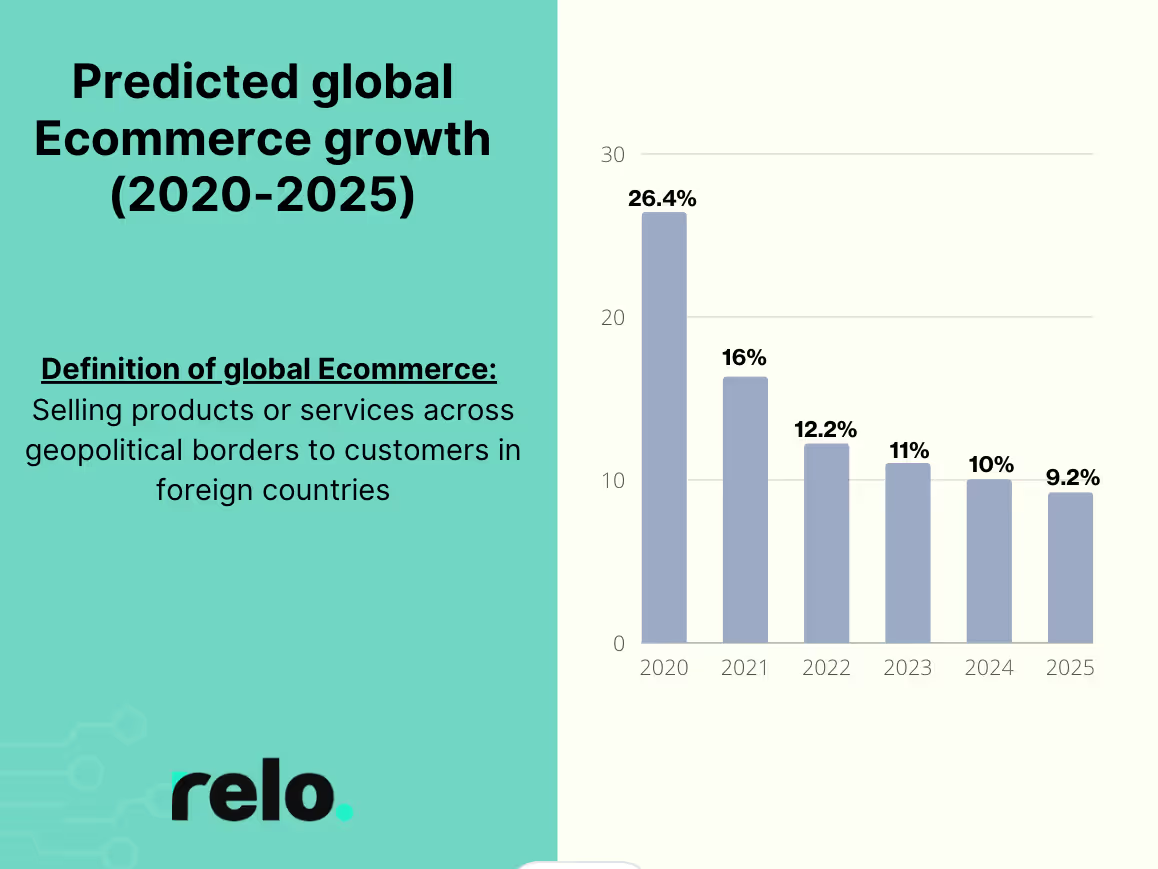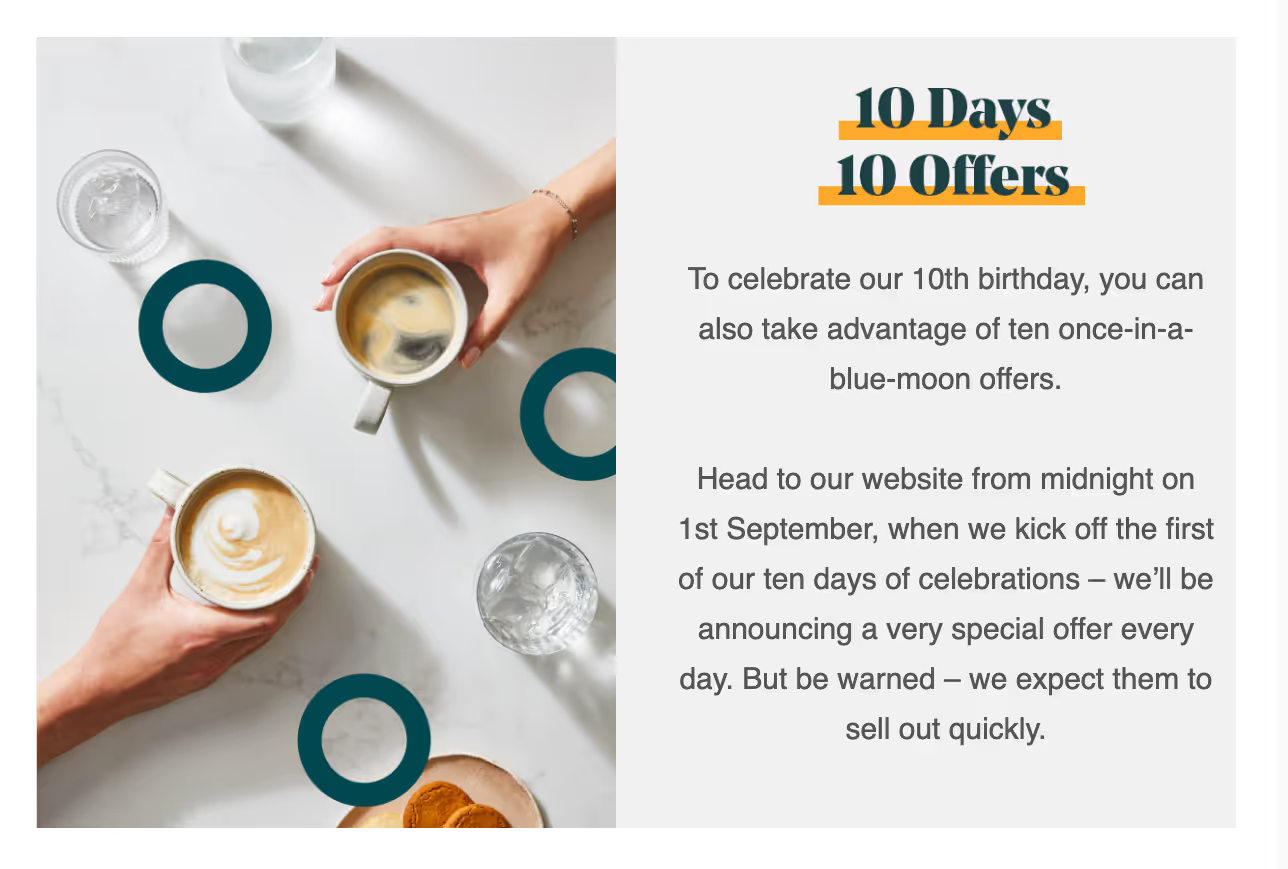Delivering Trust: How to Turn Holiday Shoppers Into Loyal Customers.
.jpg)
Last month, Shopify - the all-in-one Ecommerce platform and go-to for DTC brands - made 10% of its workforce redundant. Earlier this summer, pay-later provider Klarna also cut 10% of its workforce in a controversial move following a hiring spurt just two months prior. The catalyst for both? A cocktail of inflation, stock market volatility and a looming recession.
With energy bills expected to double for UK households by January, and inflation currently running at 9%, the majority of consumers are feeling the pinch. When times are hard, people cut back on non-essentials to stay afloat and nice-to-have luxuries are usually the first thing to go.
While all of this casts a gloomy shadow over the future of Ecommerce, is the picture really as bleak as the news leads us to believe? Let’s take a look.

Overall global Ecommerce growth is currently down 4.1% on the previous year, and looks set to slow further in the coming years. It’s worth bearing in mind though, the global Ecommerce market is still growing, just not at such a fast rate. Global Ecommerce essentially means ‘international Ecommerce’ and selling online goods between geopolitical borders.
When we look at how much retail spend is predicted to be online in the coming years (see below), the picture is overwhelmingly positive.

By 2023, it’s expected that for every £100 spent by consumers, £21.50 of that will be spent on online shopping. This figure is set to increase incrementally up to 2025. Global Ecommerce growth is slowing down, but the percentage of money spent online is growing.

During the recession, DTC brands offering essential goods and services are likely to fare much better than the more niche, nice-to-haves as consumers scale back on outgoings.
Natalia Howard, Head of Ecommerce Strategy at award-winning Shopify Plus Agency, Underwaterpistol says,
She continues, "Brands may also be exploring internationalisation, going beyond borders to expand and diversify their marketing efforts. They'll have to leverage new channels (such as SMS) to the best of their abilities to maintain or expand their market share. Brands are looking at making smart investments for the next few years whilst also having the right foundation in place to sustain themselves for now.”
We also asked Adam Kitchen, Founder of Ecommerce growth agency, Magnet Monster for his opinion on the next 12 months for Ecommerce. Adam has helped over 100 D2C brands to scale using growth tactics with $15M revenue attributed to email.
In terms of survival tactics for the short term, Adam recommends analyzing CAC spend against payback period, and being bold.
Ross Adamson of Charle - a Shopify agency that has worked with the likes of Candy Kittens and Rude Health agrees.
Meanwhile, Head of Growth Nathan Abbott, Head of Growth at Underwaterpistol believes that immersive tech could have its time to shine over the next year. He says,

iOS privacy changes and a loss of third-party data has made it increasingly difficult for Ecommerce and CRM Managers to target customers effectively.
Ross recommends spreading your advertising efforts across multiple channels for best results.
Nathan agrees,

DTC brands are ten a penny these days. If you want to stand out and be remembered, you need to build an unforgettable brand. We asked Nathan Abbott and Natalia Howard of Ecommerce Agency Underwaterpistol to describe a few ways brands can carve out a stronger identity.
Natalia believes that also having a clear strategy in place is critical.

The DTC brands we work with tell us all the time that the biggest problems they face are to do with retention and churn. Now, more than ever DTC brands are going to have to show their existing customers that there is value in buying from them again, or keeping a subscription or face losing them to the unfolding recession.
It may be tempting to go off in search of the shiny new customer, but Ross doesn’t recommend it. “It can cost five times as much to acquire a new customer compared to maintaining an existing one, highlighting the importance of retaining your relationship with loyal customers and ensuring they're kept satisfied.”
We’ve revealed over 30 best-in-class tactics for driving more revenue from your existing customers in our Repeat Revenue DTC Checklist.

The good news for DTC brands is that many do offer consumer staples that can be considered essential according to the graphic above. Anything that is required to function like food and drink is unlikely to suffer too badly.
When it comes to sinking funds, price-conscious consumers will look to cut spending in high price areas like holidays and eating out but the reverse of this is that they still want to enjoy small pleasures at home, hence holding onto a coffee subscription, beauty items or wine delivery.
One anomaly to this logic is luxury goods, which in the 2011 recession, continued to thrive with brands like Yves Saint Laurent reporting a 59% increase in revenue. We can only assume this is because the consumers who tend to buy luxury goods have a wider safety net of disposable income to begin with, so are not as affected by economic downturns.
Having said this, the concentration of DTC brands in these areas is higher than it's ever been before, so brands are going to have to bring their A-game to stand out.
Natalia Howard from Underground Ecommerce believes personalization can help brands to stand out.
At Relo, we believe the best way to futureproof your DTC brand is to drive more revenue from your existing customer base. In fact, we launched our repeat revenue solution after acutely experiencing problems getting customers to buy again, try a subscription and stay loyal when building our own DTC brand 5 years ago.